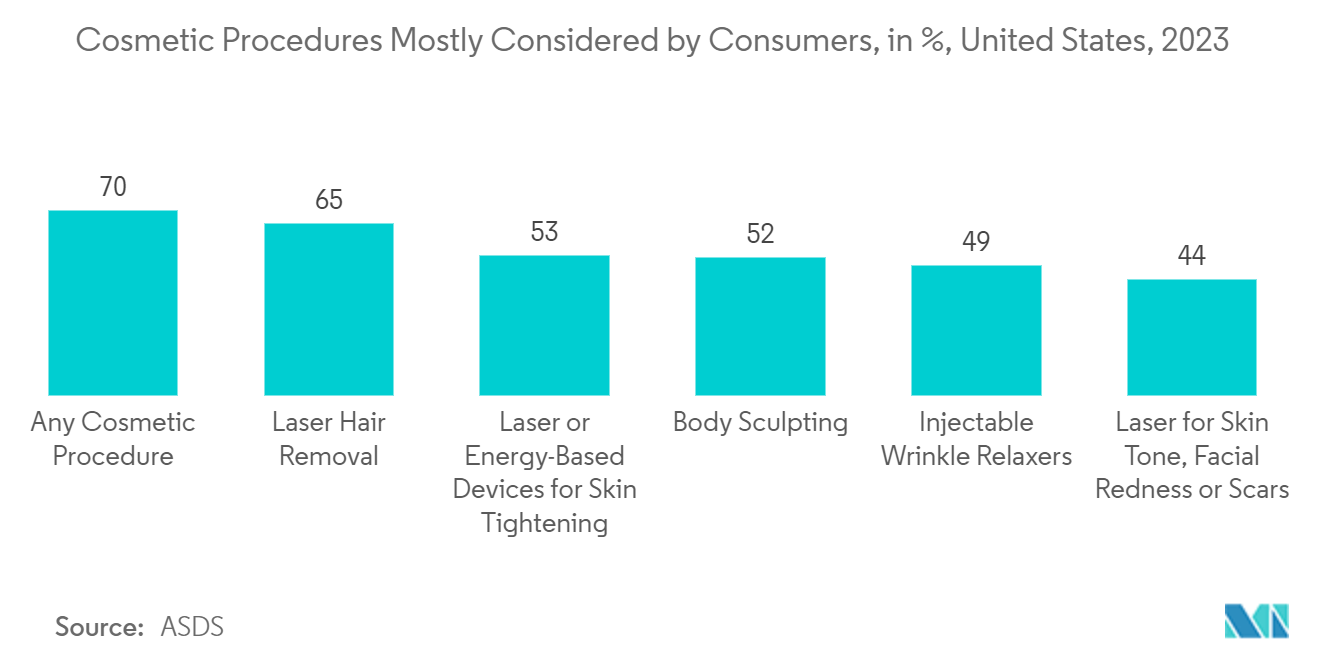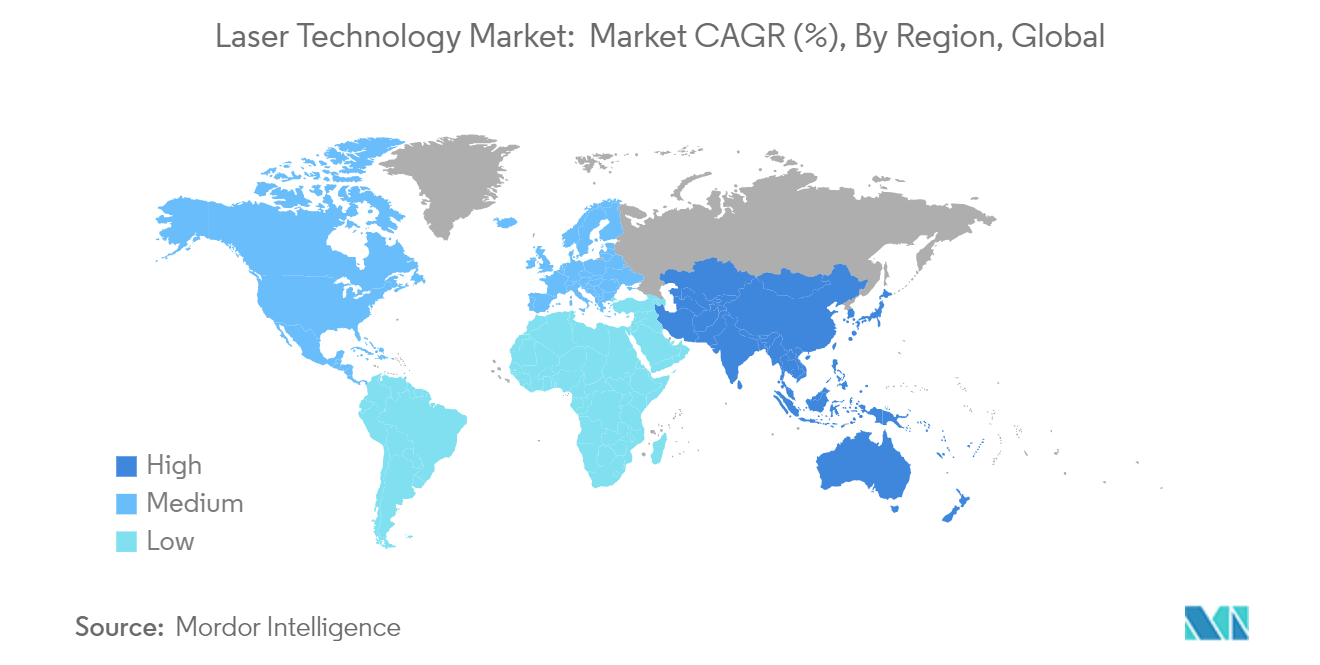Market Trends of Laser Technology Industry
Medical and Cosmetics Segment to Witness Significant Growth
- Laser technology is increasingly being embraced in the medical and cosmetics sectors. Its rising significance in medicine stems from its minimally invasive nature, allowing for surgeries, diagnostics, and treatments to be performed with enhanced speed and precision. Factors driving this trend include a heightened demand for medical lasers to treat various ailments and a surging appetite for non-invasive therapies, both of which are poised to fuel the expansion of the laser technology market in these sectors.
- In recent years, laser technology has become increasingly popular for eye surgeries. The Conlon Eye Institute reports that LASIK boasts a consistently high satisfaction rate of 95.4% worldwide. In addition, around 30 million individuals globally choose laser eye surgery annually, underscoring its widespread acceptance as a reliable vision correction method.
- Given the proven efficacy of laser technology in eye-related surgical procedures, numerous medical and healthcare institutions are adopting this advanced technology. For example, EuroEyes, utilizing cutting-edge laser techniques, annually treats over 25,000 patients suffering from nearsightedness, astigmatism, farsightedness, presbyopia, and cataracts.
- In recent years, laser technology has seen significant adoption across a range of surgeries and cosmetic procedures. For example, data from the American Society for Dermatologic Surgery (ASDS) indicates that in 2023, 70% of respondents in the United States were contemplating a cosmetic procedure. Leading the list was laser hair removal, with skin tightening treatments using laser or energy-based devices closely following.
- The segment is experiencing significant growth in research and development activities, further propelling the adoption of laser technology in medical procedures. For example, in April 2024, Summus Medical Laser collaborated with RegenMed to launch an extensive Real-World Evidence Program. This RWE Program aims to broaden Summus Laser's Class IV Laser Therapy research, producing validated and statistically significant datasets. These datasets are expected to be instrumental in improving patient care outcomes and driving further product innovations.

Asia-Pacific to Hold a Significant Market Share
- Over the past few decades, the Asia-Pacific region has experienced significant growth. China has risen as a global manufacturing hub, while nations like Japan, South Korea, and Taiwan have carved out their niches in sectors such as consumer electronics, automotive, and semiconductor chip manufacturing. This bolstered outlook for key end-user industries in laser technologies fosters a conducive environment for the market's expansion in the region.
- Various industries, such as metal processing, healthcare, machinery manufacturing, and defense, are increasingly adopting laser technology. In addition, the heightened adoption of material processing applications and robotics in this region is driving the demand for industrial laser systems. This trend is attributed to a manufacturing upsurge and the integration of advanced laser technology in the industrial sector. The growing demand and production of consumer electronic items in the region are presenting new growth opportunities for major market players.
- For instance, China has solidified its position as the dominant player in the robotics market. According to data from the Ministry of Industry and Information Technology (MIIT), in 2023, China produced 430,000 industrial robots. For the past three years, over half of the world's newly installed robots have been added to China. As lasers play a crucial role in supporting the robotics infrastructure, such trends support the studied market's growth.
- Countries such as China, Japan, Taiwan, and South Korea dominate semiconductor chip manufacturing in the Asia-Pacific region. Meanwhile, nations like India, Indonesia, Vietnam, and Malaysia are seeing significant investments in new chip manufacturing facilities. Given that lasers play a pivotal role in the lithography process—a key step in chip manufacturing—these trends foster a conducive environment for the growth of the studied market.
- The growing investment in healthcare infrastructure across the Asia-Pacific region is also driving opportunities in the studied market. For instance, countries like India and China, among others, continue to witness a growing influx of advanced medical equipment and technologies in the medical and cosmetics segment, creating a favorable ecosystem for the studied market's growth.


